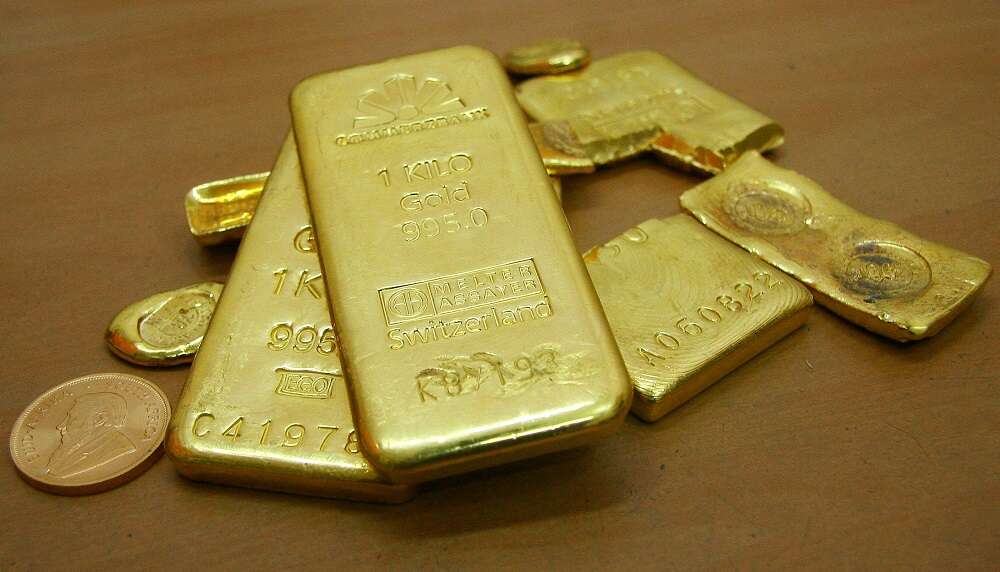
By Herbert Lash
NEW YORK (Reuters) – Gold prices jumped to an eight-month high and safe-haven debt rose on Thursday after U.S. President Joe Biden said there was every indication Russia planned to attack Ukraine, while Moscow accused Washington of ignoring its security demands.
A gauge of global equities fell more than 1% despite strong corporate earnings in Europe as the standoff over Ukraine deepened. Russian-backed separatists and Ukrainian forces accused each other of firing shells across a cease-fire line as Britain said Russia sought to fabricate a pretext to invade.
In a sign of increasing alarm about Ukraine, U.S. Secretary of State Antony Blinken told the UN Security Council this is “a moment of peril” for the lives and safety of millions of people regarding Russia’s potential invasion of Ukraine. Russia denies planning to invade its neighbour.
U.S. and German government bond yields fell, and oil slid as talks entered their final stages to resurrect a 2015 nuclear deal that would allow Iran to resume oil exports to clients such as South Korea. Losses were capped by the growing tension between major energy exporter Russia and the West.
Investors already were looking toward the long weekend with Monday a U.S. holiday when markets will be closed, said Marc Chandler, chief market strategist at Bannockburn Global Forex.
“You as a market participant are not incentivized to be fighting the risk-off mood ahead of the weekend when anything can happen,” Chandler said.
The pan-European STOXX 600 index fell 0.74% while MSCI’s gauge of stocks across the globe shed 0.85%.
On Wall Street, the Dow Jones Industrial Average fell 1.19%, the S&P 500 lost 1.18% and the Nasdaq Composite dropped 1.47%.
Asia MSCI’s broadest index of Asia-Pacific shares eked out a 0.15% rise.
Worries about a super-hawkish Federal Reserve rate-tightening campaign eased overnight after minutes of its latest policy meeting signaled a measured, even dovish stance.
Ukraine concerns led investors to buy government debt. Yields on the U.S. 10-year Treasury note dropped 8.2 basis points to 1.963%, while yields on Germany’s 10-year government bond slid 0.2 basis points to 0.229%.
The Russia-Ukraine crisis has unnerved investors who also must monitor the Fed and efforts by other central banks to fight soaring global inflation.
“There’s a lot of confusion right now and everybody’s crystal ball is pretty cloudy,” said George Mateyo, chief investment officer at Key Private Bank, speaking of both of Ukraine and how the Fed might tighten monetary policy.
The U.S. economy has weathered COVID-19’s hit on the economy well, with GDP and corporate earnings at peak levels, which bodes well for the market, he said.
“It’s going to be a challenging year, but not a dire year,” Mateyo said. “Expect some volatility this year, but don’t abandon risk altogether, don’t get super defensive. There’s a lot of missed opportunities inside the market.”
Spot gold added 1.5% to $1,895.77 an ounce after rising close to the key $1,900 mark.
Oil prices fell more than 2% before easing. U.S. crude futures fell 1.56% to $92.20 per barrel and Brent was at $93.30, down 1.59% on the day.
The dollar, also regarded as a safe haven, initially rose against most currencies but gains subsided and the greenback was later marginally lower – a sign investors were not yet panicking about the Russia-Ukraine tensions.
However the Japanese yen, a currency investors often buy as a safe-haven, hit its strongest since Feb. 7.
The dollar index fell 0.058% as the yen strengthened 0.42% at 114.98 per dollar.
The euro down 0.06% to $1.1366.
Bitcoin last fell 4.62% to $42,047.23.
(Reporting by Herbert Lash, additional reporting by Tommy Wilkes in London, Kevin Buckland and Selena Li in Tokyo; Editing by Kim Coghill, Kirsten Donovan and Barbara Lewis)


